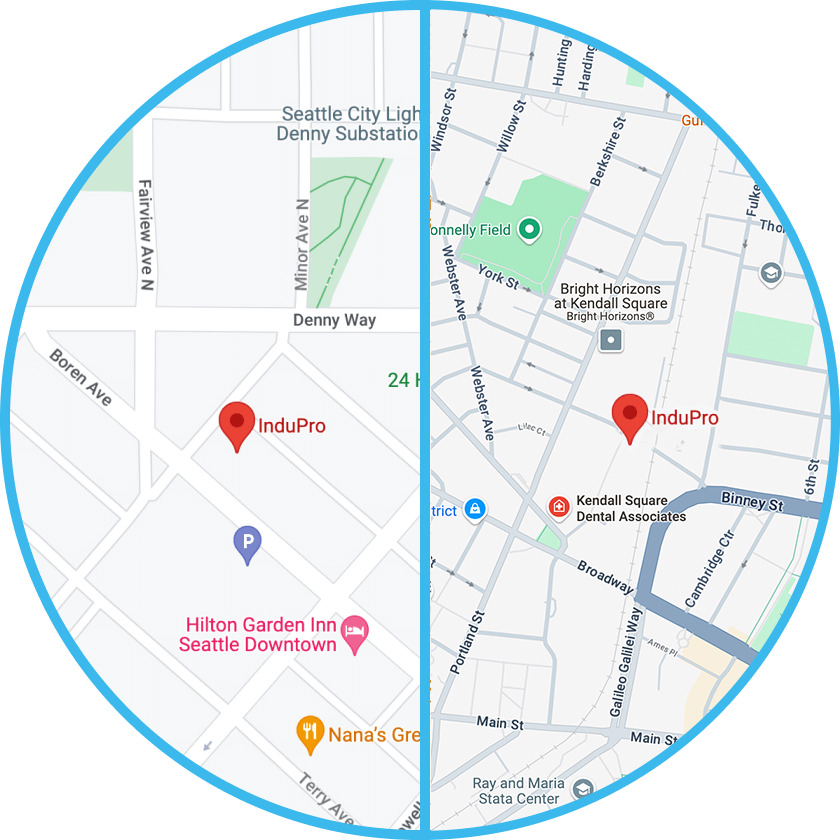At InduPro, our platform provides unique insights into proximity biology, driving the development of a differentiated pipeline with both first- and best-in-class potential. By defining surface protein neighborhoods and leveraging proprietary AI/ML, we identify new drug targets and innovative pairings with novel targeting strategies. Our robust capabilities position us to deliver a pipeline of disruptive, next-generation therapeutics that will transform precision medicine. We are quickly advancing cutting-edge programs in oncology and immunology, utilizing proximity-based modalities to redefine the future of therapeutic possibilities.
| Program | Class | Target | Discovery | Lead Optimization | IND enabling | Clinical |
|---|
| Oncology |
| IDP-001 |
Bispecific ADC |
EGFR x *TAPA-E1 | |
IDP-001 is a first-in-class, proximity-based bispecific antibody-drug conjugate (ADC) designed to target both EGFR and a novel tumor-associated antigen (target name blinded and referred to as TAPA-E1).
EGFR is a key oncogene and tumor antigen that is overexpressed in many cancers, often with mutations that lead to resistance to targeted therapies. Current EGFR-based treatments are only partially effective, creating a significant unmet need for therapies targeting EGFR-driven tumors. In addition, broad EGFR toxicity limits the use of existing treatments across various tumor types. The dual targeting of EGFR with TAPA-E1 enhances tumor selectivity, target internalization, and efficacy.
IDP-001 has potent activity in preclinical studies, demonstrating significant tumor-killing activity in multiple models. IND filing is planned for Q1 2026.
|
| IDP-004 |
Bispecific ADC |
MET x *TAPA-M1 | |
|
| IDP-005 |
Bispecific ADC |
Novel x Novel | |
|
| Multiple |
ADC/T-Cell Engager |
| |
|
| Immuno-Oncology |
| IDP-002 |
PD1 Antagonist |
PD1 x T-Cell Antigen 1 | |
IDP-002 is positioned to be a best-in-class bispecific PD1 antagonist, offering superior receptor occupancy through cooperative binding compared to conventional PD1 antagonistic antibodies.
Unlike emerging PD1/L1 x VEGF bispecifics, IDP-002 is independent of VEGF for enhanced activity, providing broader indication opportunities. It also enhances T-cell signaling and activation, differentiating itself with a novel target for cooperative cis-binding to PD1.
In addition to avoiding the challenges of VEGF-dependence, IDP-002 achieves better PD1 blockade and receptor occupancy while limiting Treg co-activation and proliferation, setting it apart from both PD1 antagonistic antibodies and PD1/L1 x VEGF bispecifics. |
| Autoimmune |
| IDP-003 |
PD1 Agonist |
PD1 x T-Cell Antigen 2 | |
IDP-003 is a differentiated bispecific PD1 agonist that takes advantage of the natural proximity between PD1 and T-Cell Antigen 2 to recruit PD1 into the immune synapse. This process occurs independently of PDL1, promoting SHP2 recruitment and enhancing PD1 signaling.
Unlike other PD1 agonists that rely on Fc receptor engagement to deplete PD1+ T cells, IDP-003 uses a distinct, non-depleting FcR-independent mechanism which also avoids induction of pro-inflammatory cytokines. This approach overcomes the limitations of current anti-PD1 agonist therapies and has applications in multiple autoimmune disease settings. |
|
|
| Oncology |
|---|
| Discovery | Lead Optimization | IND enabling | Clinical |
IDP-001 Class: Bispecific ADC Indication: EGFR x *TAPA-E1 |
IDP-001 is a first-in-class, proximity-based bispecific antibody-drug conjugate (ADC) designed to target both EGFR and a novel tumor-associated antigen (target name blinded and referred to as TAPA-E1).
EGFR is a key oncogene and tumor antigen that is overexpressed in many cancers, often with mutations that lead to resistance to targeted therapies. Current EGFR-based treatments are only partially effective, creating a significant unmet need for therapies targeting EGFR-driven tumors. In addition, broad EGFR toxicity limits the use of existing treatments across various tumor types. The dual targeting of EGFR with TAPA-E1 enhances tumor selectivity, target internalization, and efficacy.
IDP-001 has potent activity in preclinical studies, demonstrating significant tumor-killing activity in multiple models. IND filing is planned for Q1 2026.
|
| |
IDP-004 Class: Bispecific ADC Indication: MET x *TAPA-M1 |
|
| |
IDP-005 Class: Bispecific ADC Indication: Novel x Novel |
|
| |
Multiple Class: ADC/T-Cell Engager Indication: |
|
| |
|
|
| Immuno-Oncology |
|---|
| Discovery | Lead Optimization | IND enabling | Clinical |
IDP-002 Class: PD1 Antagonist Indication: PD1 x T-Cell Antigen 1 |
IDP-002 is positioned to be a best-in-class bispecific PD1 antagonist, offering superior receptor occupancy through cooperative binding compared to conventional PD1 antagonistic antibodies.
Unlike emerging PD1/L1 x VEGF bispecifics, IDP-002 is independent of VEGF for enhanced activity, providing broader indication opportunities. It also enhances T-cell signaling and activation, differentiating itself with a novel target for cooperative cis-binding to PD1.
In addition to avoiding the challenges of VEGF-dependence, IDP-002 achieves better PD1 blockade and receptor occupancy while limiting Treg co-activation and proliferation, setting it apart from both PD1 antagonistic antibodies and PD1/L1 x VEGF bispecifics. |
| |
|
|
| Autoimmune |
|---|
| Discovery | Lead Optimization | IND enabling | Clinical |
IDP-003 Class: PD1 Agonist Indication: PD1 x T-Cell Antigen 2 |
IDP-003 is a differentiated bispecific PD1 agonist that takes advantage of the natural proximity between PD1 and T-Cell Antigen 2 to recruit PD1 into the immune synapse. This process occurs independently of PDL1, promoting SHP2 recruitment and enhancing PD1 signaling.
Unlike other PD1 agonists that rely on Fc receptor engagement to deplete PD1+ T cells, IDP-003 uses a distinct, non-depleting FcR-independent mechanism which also avoids induction of pro-inflammatory cytokines. This approach overcomes the limitations of current anti-PD1 agonist therapies and has applications in multiple autoimmune disease settings. |
| |
